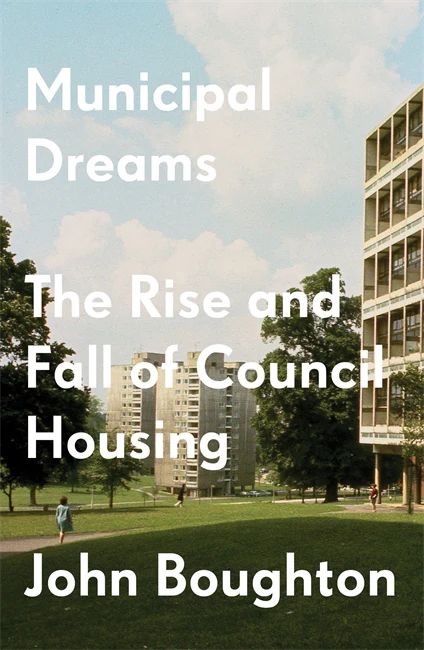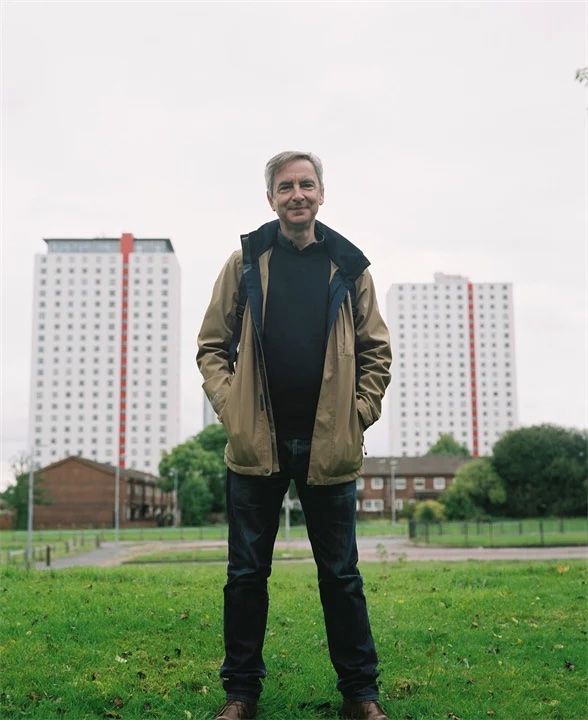Are You A Vanguard? Applications Now Open
Anthony Fomin
This is your first of three free stories this month. Become a free or sustaining member to read unlimited articles, webinars and ebooks.
Become A MemberConversations about social housing often become polarized around examples with widely differing outcomes: robust and fully funded social housing in places like Vienna, Austria, or on the other hand, the often deteriorating and chronically under-funded public housing in the United States. In some ways, the social housing system in the U.K. has a more complicated story to tell; it contains housing stock that speaks to the best of what public housing can be and housing stock that shows the impact of mismanagement and underfunding on tenants.
In his 2018 book “Municipal Dreams,” social historian John Boughton surveys the history of the U.K.’s social housing system, which still houses about 17% of England’s population in 4.4 million homes. Originally called “council housing” after the local governing bodies that oversaw them, they’ve increasingly been either transferred into the management of third-party nonprofits called housing associations, or sold off to the private market altogether.
Boughton argues that decades of privatization have hobbled the system, which has been historically known for producing high-quality and affordable housing that changed millions of people’s lives. Those issues were most public after the 2017 Grenfell Tower fire, where electrical issues in a council high-rise in London led to the deaths of 72 people. In his book, Boughton contends that this was the “awful culmination to deeply damaging policies pursued toward council housing, and the public sector more widely, since 1979.”
Despite high-profile tragedies in recent years, Boughton argues that the U.K.’s social housing system still overwhelmingly provides a decent quality of life. As he argues, “The constant was the failure of the free market and private enterprise to provide the healthy and affordable homes that ordinary people needed and deserved.”
Boughton spoke with Next City about his book, the privatization of council housing, and the problems the system faces today. The conversation has been edited for length and clarity.

If we looked at council housing and the first council housing from the 1890s, and into the interwar period [from 1918 to 1939], it was certainly directed primarily towards the working classes. They were designated in the legislation (Housing of the Working Classes Act) as artisans, the laboring classes, but primarily for the better-off working class, those in regular employment with relatively high and stable incomes. Because it was those groups that could pay the rent, and the rents were relatively high, higher than slum housing. And the rules and expectations about paying rent were high.
There was an assumption, the “filtering up” theory [that] assumed that while the better-off working class would move into the new council housing, the less well-off working class would move into the slightly less slum housing that had been vacated by those who moved into council housing. That was the theory — it didn’t really work very well, because people stayed in the slums.
The 1930 Housing Act was an attempt to target the needs of slum dwellers and to subsidize the rehousing of people who lived in slum housing. In the same legislation is an allowance made that rents could be reduced for those who couldn’t afford higher rents. That’s the shift in the early years into the ‘50s and ‘60s. Council housing was still pretty aspirational housing; it still housed predominantly a well-off working class, in the wider context of a working class whose living standards were rising in this period.
In 1977, a Labour government introduced the Housing Homeless Persons Act, which gave the right to public housing to a family or individual in priority need –having young children, physical or mental health needs, elderly people, and so on.
The major shift occurs essentially from 1979. You have Thatcher in the U.K. You have this new right neoliberal politics. And Thatcher was famously opposed to council housing. She introduced the Right to Buy, which allowed people to purchase their homes. But she also severely limited the building of new council houses.
So what happens in the ‘80s is this combination of council housing is prioritized to those in greatest need, alongside a severe reduction of housing stock through Right to Buy and through the reduction of new build. And at that point, council housing becomes increasingly to house a more disadvantaged population.
No, it doesn’t really work that way. You could make the case that the worst quality public housing was built in the ‘60s, precisely when the ambition was to build them the most, to build it quickly and at scale. There was a mass public housing drive that took place.
But actually, local housing standards remain pretty constant into the ‘70s and ‘80s. Between 1945 and 1979, the U.K. built on average 126,000 council houses a year. Currently, we’re building about 6,000 to 7,000. But the build quality, the space standards, etc., is pretty high and certainly superior to private rental and the low-income homes built in the private sector.

The conservative governments of the 1980s do three things. One is to sell off council housing. The second thing is to severely restrict the ability to build new council housing. And the third thing is to reduce the overall central housing budget, which did severely reduce the amount that local councils have to spend on maintenance and upkeep.
In the U.K., the political system is very centralized. There’s very little devolution of power. Local councils have powers and finances which are basically dictated by the central government. And if the central government is hostile to local government spending, which they are currently and have been for some time, it makes life pretty difficult for local councils. Budgets are severely reduced, central government support is severely reduced. And powers of local taxation are also controlled and limited.
To some extent predating Thatcher, there’s this disillusion with the role of the state and, specifically, the ability of councils to build and manage well. That distrust, and in. Thatcher’s case, that political antipathy to primarily Labour-controlled local councils that owned and managed their housing stock was very pronounced.
In the ‘80s, Thatcher wants to shift the ownership of social housing from local councils to housing associations. She thought housing associations would be less bureaucratic, more flexible, more responsive.
You have what’s called large-scale voluntary stock transfer — which in practice wasn’t very voluntary, because the financial regulations and rules made it almost impossible for local councils to retain their housing stock. But the intention behind the legislation and the financial regime was to force them, or encourage them at least, to transfer housing stock to housing associations.
Ironically, New Labour comes in in 1997. Tony Blair is the new prime minister, and New Labour is pretty hostile to local councils, sharing that distrust that the Tories and to some extent Thatcher held. Blair was to emphasize the role of housing associations as the builders and managers of what we now call social housing, hence the shift to calling it social housing.
Nowadays, we’ve got about 17-18% of the population living in social housing. About half live in homes owned and managed by housing associations, and about half in homes owned and managed by local councils.
No. Councils got a lot better from the 1980s. There were problems in the ‘70s and ‘80s. But they’ve become much more responsive and customer-oriented. Not perfect by any means, but better.
What’s interesting is what’s happened to housing associations. They did tend to be more locally based, smaller scale. In that sense, in the ‘80s, you would have expected them to be better, flexible, more responsive. But increasingly, those associations have merged, becoming far bigger and less locally based. They’re much more corporate in style and ethos. Most people would argue they’ve become far less responsive, far worse managers than they were. Certainly no better than the local councils in the “bad old days” as it were. It’s pretty universally recognized that housing associations replicate many of the problems associated with bureaucratic corporate housing management of the past.
The second issue with housing associations is in terms of building and maintenance. A lot of their income depends on public-private partnerships. So they have to work with private developers to build new housing. And that means that increasingly, housing associations have to agree that a significant proportion of new build will be homes for sale or homes for private rent at higher rents. And, therefore, in most cases, new social [housing] is a much smaller proportion of what they do. And housing associations as a whole through that financial regime, and partly through a changed ethos, are far more commercially minded, far less philanthropic. Their founding ethos was they were there to meet housing need. Increasingly, they see themselves as housing developers working within a market context.
Yeah, it was very beneficial. It’s a very popular policy. I was a member of the Labour Party in the 1980s, knocking on council housing doors. The support for Right to Buy was very powerful. Homes were offered at a large discount; you weren’t paying rent anymore, you paid a fairly small mortgage which you could then pay off. And of course, you could either pass on your home to your children or more often, you could sell it for very good profit. At that point, it was popular and worked as Thatcher envisaged.
In the longer story, it’s been pretty disastrous and far more negative. Once that first generation of new homeowners die or retire or move on, sometimes (the houses) will go to the children, but often they’re sold. So now 40% of homes purchased under Right to Buy are in the private rental sector. They’re bought by landlords who (rent) them at higher rents to private tenants.
So you’ve got this huge irony that you’ve got estates, which are now very mixed; council tenants [and] housing association tenants, alongside private renters [who are] paying much higher rents in far less well-maintained private sector homes. Whereas [councils and] housing associations will still renovate and refurbish homes. So nowadays, it’s completely turned around; former Right to Buy homes are the worst maintained whilst being more expensive.
Because of this reduction of council housing stock, in order to house people — because they’re required by law under that 1977 Housing Homeless Persons Act to house those in priority need — councils are renting formerly Right to Buy properties, paying those high rents in order to house in effect council tenants.
Certainly Right to Buy increased division. Typically it was the better quality houses that were bought; it was the less popular housing, typically multi-story housing, which wasn’t bought. It creates those new social divisions in terms of homeownership, absolutely. Of course, the better-off tenants could find the money, less well off tenants couldn’t, so that there’s that financial divide.
The irony is that in the last 10 to 20 years, homeownership has declined in the U.K. It’s actually a lower proportion now and lower than some mainland European countries, because house prices are so inflated.
We have a term here called Generation Rent: A whole set of people in their 20s, 30s, into their 40s, who will never be able to afford to buy and are increasingly living in the private rental sector. Private rental was virtually eradicated by 1980. But now it’s overtaken the social housing sector.
That’s a good question. This guy Kwajo Tweneboa has done a fantastic job in publicizing really appalling conditions in mainly housing association properties, but also local councils. Nobody is the good guy here.
I’m a huge advocate of social housing, and I’m shocked and disappointed that those conditions are allowed to exist. I think it’s an appalling dereliction of basic managerial duty. The first task of a housing association or council is to manage their properties well, to keep their tenants safe and secure, and decently housed. That should be the priority. If it isn’t, there’s really no excuse. I think the fact that that isn’t happening does reflect, certainly with housing associations, that loss of local presence, local accountability, immediacy, where you have much closer hands on management and supervision. Finance obviously is another issue. But overwhelmingly it’s a failure of duty and governance.
Absolutely. I’m not interested in telling some fairy story about every council house, every tower block that was built was perfect. That obviously wasn’t the case. Mistakes were made and are still being made.
But in the longer history, council housing transformed the lives of millions for the better. It was aspirational housing, providing millions of people with decent, affordable, secure homes that provided a springboard for them to live the best lives they could. It provided a quality of housing which they could not have achieved or anticipated in any other way, which would never have been provided by the private sector, historically, and still won’t be provided by the private sector.
The new social rent homes that are being built are generally of far higher standard in terms of space and build quality than the equivalent private sector development. Local authorities and housing associations are taking the lead in building sustainable housing, passive houses, eco-friendly housing.
I think the comparisons with (other European countries) are interesting. The basic difference is that Britain went down this path of direct state provision of housing, both using the power and finance of the central state, but using the local state as the deliverer, as it were. Whereas in continental Europe, it was third-sector organizations, housing associations and public utility societies.
The strengths of British council housing was that it wasn’t stigmatized and marginalized as more and more limited forms of public housing have been elsewhere. In 1981, one in three lived in a council house. If you lived in the middle of the post-war generation, there’s a one in two chance that you lived part of your life in a council house.
Generally speaking, it’s been built to high standards. Even in the tenement, multi-story housing, space standards and facilities were generally higher than (social housing) built at the same time in continental Europe. Generally speaking, the quality was good, the range of provision was good and the scale was impressive.
There’s real quality in other other forms of delivery. I was in Switzerland, recently, which is a very affluent country, of course, but [it has] fantastic, fantastic social housing. Because they have the money, but delivered predominantly by third-sector organizations.
I think the greatest weakness of the British council housing system was its vulnerability to political control and manipulation. That’s what happened in 1979, that council housing was incredibly vulnerable to a change of regime at Westminster. Suddenly, the whole world changed. And councils have no autonomous powers which could protect their council housing, which could finance their council housing. It’s a very centralized system. It’s very vulnerable to political whim and political opposition.
In the ‘70s and ‘80s there was a very powerful narrative: Public housing has failed. It creates dependency, it’s badly managed.
Into the ‘50s, ‘60s, ‘70s, council housing was aspirational housing. It enjoyed public support and the gratitude of the millions of tenants that lived in the 5.5 million council homes that were in existence in 1980. But from the ‘70s and ‘80s, it shifts. There’s this sea change in public perception, and certainly in current media commentary and the characterization, the stigmatization and marginalization becomes very pronounced.
Forty years on, I think we’re now far more understanding of the quality and contribution of council housing historically. We’ll always have a mixed housing market, we need a private rental sector, we need owner occupation. But it’s now increasingly clear that in any viable functioning housing market, we need a thriving public sector. The financial means and possibilities are not as generous as they were historically. But I would like to think with a change of mentality, we are now in a context where both people and politicians understand that we need to be building more social rent homes.
This story was co-published in collaboration with Shelterforce, the only independent, non-academic publication covering the worlds of affordable housing, community development and housing justice.

Roshan Abraham is Next City's housing correspondent and a former Equitable Cities fellow. He is based in Queens. Follow him on Twitter at @roshantone.

20th Anniversary Solutions of the Year magazine